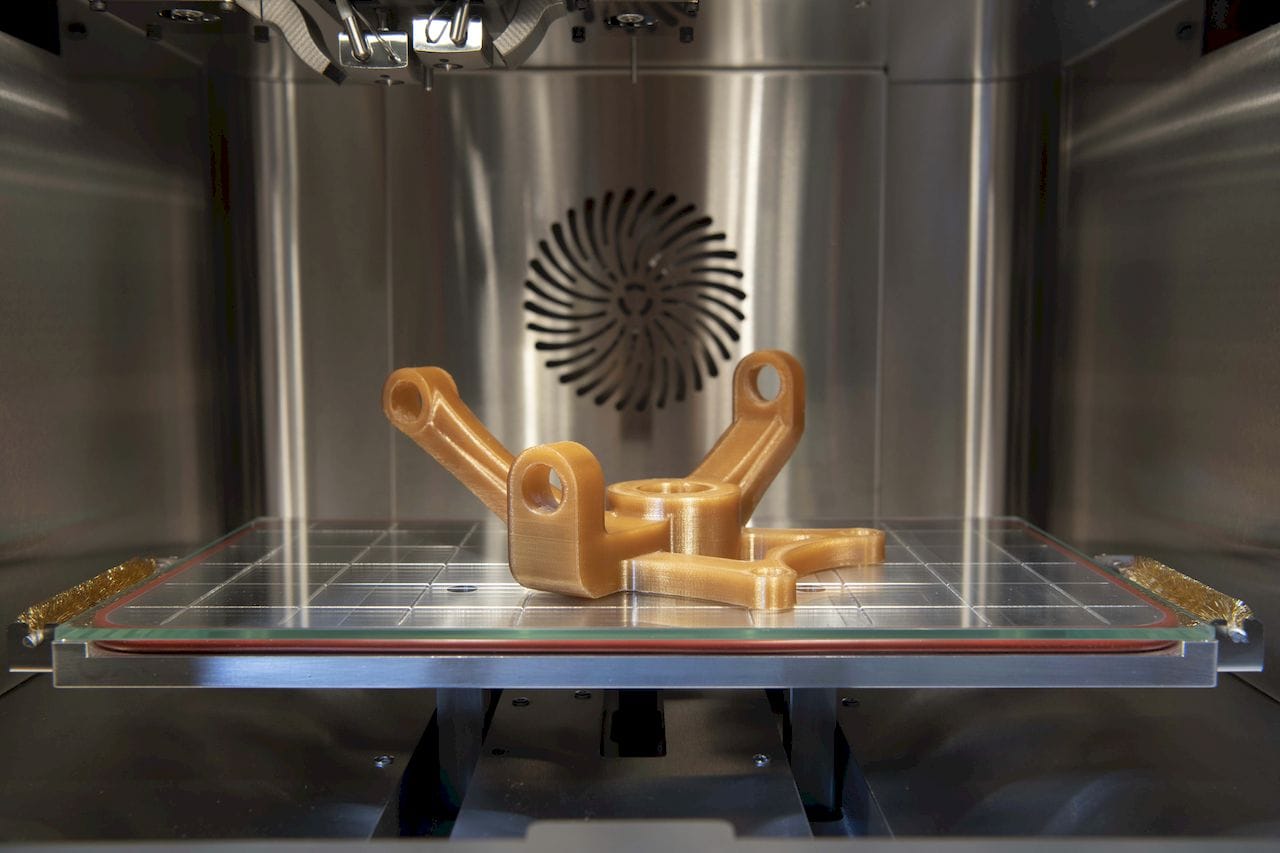![3D printed ULTEM 1010 part by miniFactory [Source: miniFactory]](https://fabbaloo.com/wp-content/uploads/2020/05/image-asset_img_5eb0913deeaba.jpg)
miniFactory has announced the release of a series of technical datasheets that should enable engineers to more easily use their 3D printers.
Finland-based miniFactory (not be be confused with London-based 3D model repository MyMiniFactory) has been producing high-end desktop 3D printers for many years. We first saw them in 2013 when they exhibited a device with an unusual motion system (stationary extruder, platform moving in all axes, all direct drive).
Since then they’ve focused on industrial 3D printing and have developed equipment that can successfully and reliably 3D print high-temperature materials, such as ULTEM. Their most recently announced machine, the ULTRA, is about as far away as you can imagine from their earlier desktop designs. It’s a full-height device that is able to 3D print in many high-temperature engineering materials.
3D Printer Material Capability
But a capable machine is not the only factor that could attract industrial customers. MiniFactory has embarked on a new angle that we haven’t seen too often in the industry: publishing technical data sheets.
The idea here is that 3D printing a part involves an interaction between two elements: a specific 3D printer model and a specific material. While we’ve all seen specifications for materials and machines, it’s actually the combination of the two that produces the final part.
Since there are many different machines and many different materials, there must be countless combinations of these machine-material pairs. Each potentially delivers a different part result, from an engineering perspective. It’s even more complex when you add in the potentially different print job parameters that might be used to produce a given part.
miniFactory Technical Datasheets
MiniFactory hopes to overcome this confusion by providing direct evidence to potential clients by using these technical datasheets.
Essentially they are analyses of 3D printed parts when specific machines and materials are used. In this way an engineer can examine the detailed technical results and make a better decision on whether miniFactory’s options will work for their application.
![ASTM testing 3D prints [Source: miniFactory]](https://fabbaloo.com/wp-content/uploads/2020/05/image-asset_img_5eb0913e74ae2.jpg)
MiniFactory has chosen to use specific ASTM test methods to ensure clients understand exactly what is being tested, and the method by which it’s done.
Here’s an example of their test of Kimya PEKK-A on their ULTRA device:
![Section of technical datasheet for using PEKK-A on an ULTRA 3D printer [Source: miniFactory]](https://fabbaloo.com/wp-content/uploads/2020/05/image-asset_img_5eb0913ecb66d.jpg)
So far, miniFactory has published three such reports on materials for their ULTRA machine, including PEKK-A, SABIC ULTEM AM9085F, and SABIC ULTEM AM1010F. I imagine they will continue to produce more datasheets on other popular 3D printing materials in the future.
Technical Datasheets By 3D Print Material Providers
This, I believe, is an incredibly good move and should be viewed positively by engineers and designers considering using miniFactory equipment.
In fact, I further believe that this should become a common practice for any 3D printer manufacturer hoping to sell equipment to engineers. If not, then the testing must be done by the engineers themselves, which is just more work.
Material providers should also consider producing similar datasheets where their materials are matched against a variety of 3D printer models. This is done from time to time, but it’s definitely not a universal thing. It should be.
Via miniFactory

